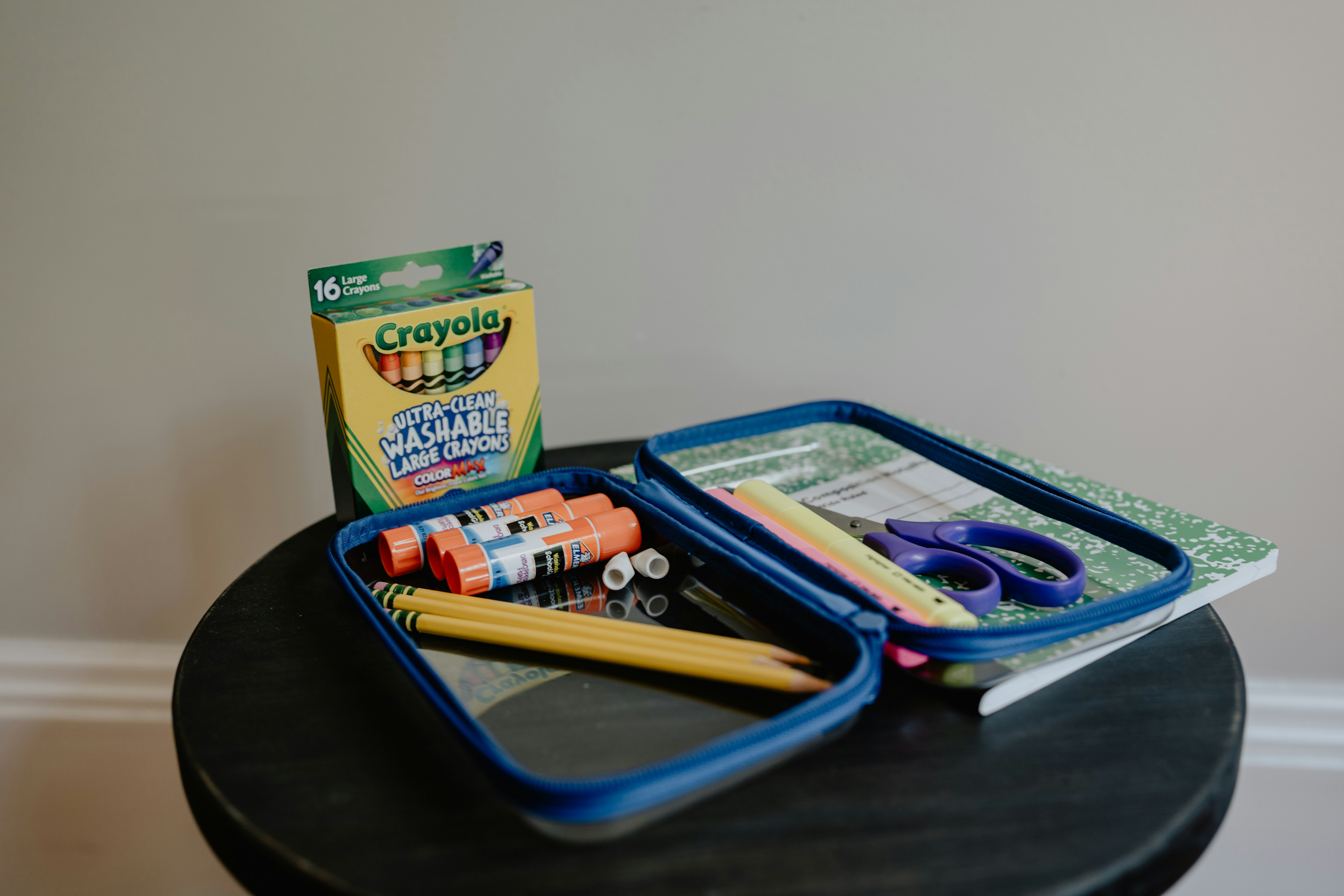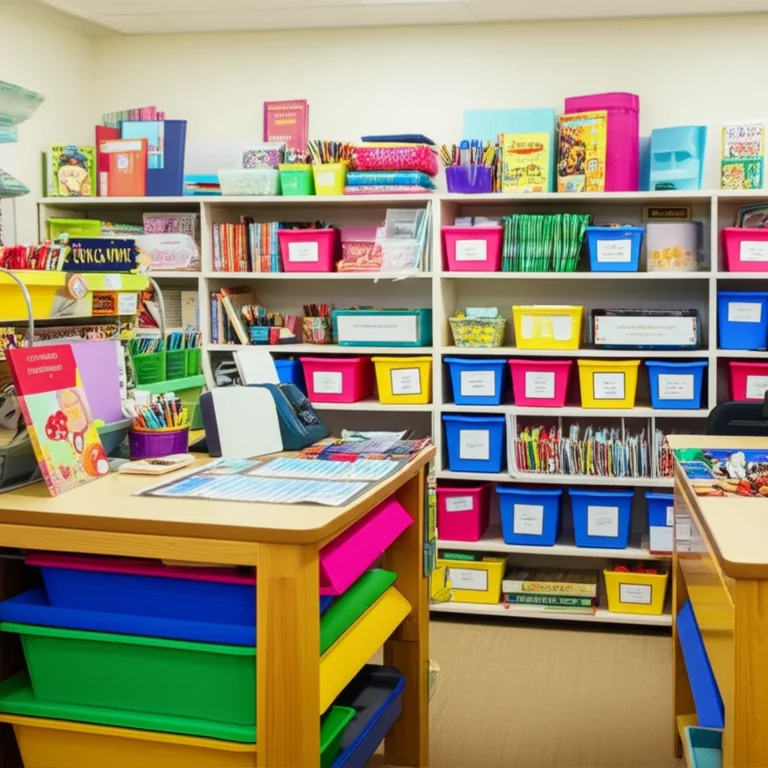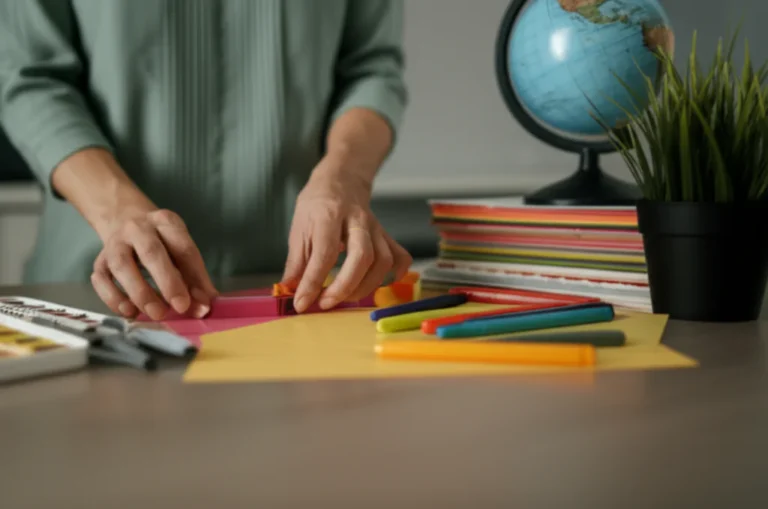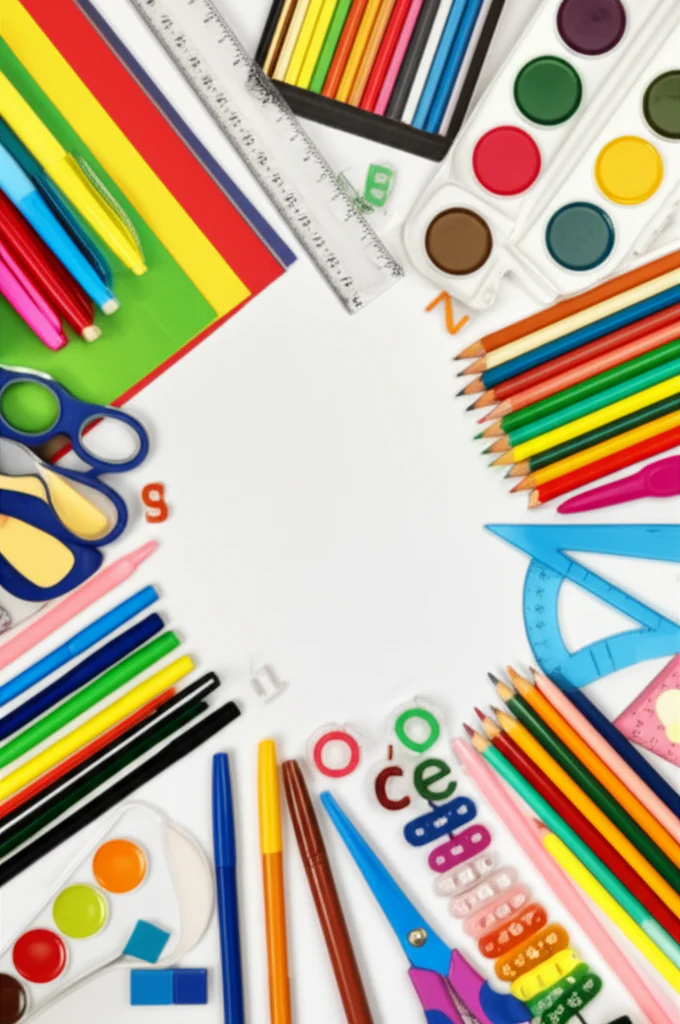Support our educational content for free when you purchase through links on our site. Learn more
What Does a Teacher Bring to the Classroom? 9 Essential Gifts 🎒 (2025)

Imagine walking into a classroom where the teacher isn’t just a conveyor belt for facts, but a spark igniting curiosity, a mentor nurturing confidence, and a captain steering a ship through the stormy seas of information overload. What exactly does a teacher bring to the classroom in today’s digital age, where Google, YouTube, and AI seem to have all the answers? Spoiler alert: it’s way more than just knowledge.
In this article, we unpack the 9 essential gifts teachers bring—ranging from emotional connection and adaptability to fostering critical thinking and equity. We’ll share inspiring stories, expert insights, and practical tips to help you understand why no app or search engine can replace the human heart in education. Plus, we’ll reveal how the right classroom supplies and instructional technology can amplify your impact. Ready to discover what truly makes teachers irreplaceable? Let’s dive in!
Key Takeaways
- Teachers inspire curiosity and make learning meaningful by connecting content to real life and student passions.
- Personal connection and mentorship create safe spaces where students thrive emotionally and academically.
- Teachers navigate information overload, teaching critical thinking and digital citizenship in an age of misinformation.
- Adaptability and resilience allow teachers to pivot and respond to the unpredictable classroom environment.
- Differentiated instruction and assets-based teaching promote equity by valuing each student’s unique strengths.
- The human element—empathy, patience, passion—is irreplaceable, even with advanced technology.
- Classroom supplies and instructional technology are powerful tools that support teachers’ multifaceted roles.
Looking to stock your classroom with supplies that support these essential roles? Check out our curated collections of Classroom Supplies and Instructional Technology to bring your teaching superpowers to life!
Table of Contents
- ⚡️ Quick Tips and Facts
- 🕰️ The Enduring Legacy: A Brief History of the Teacher’s Role
- 💖 Beyond the Textbook: What Teachers Truly Deliver
- 1. 💡 The Spark of Inspiration & Curiosity
- 2. 🤝 The Art of Personal Connection & Mentorship
- 3. 🎶 The Maestro of Classroom Culture & Community
- 4. 🧭 The Navigator of Knowledge & Critical Thinking
- 5. 💪 The Architect of Adaptability & Resilience
- 6. 🌱 The Champion of Social-Emotional Growth
- 7. 🌈 The Master of Differentiated Instruction & Equity
- 8. 🌍 The Bridge Builder: Connecting Home, School, & World
- 9. 🌟 The Unsung Hero: Passion, Patience, and Persistence
- 💻 Teachers in the Digital Age: More Vital Than Ever?
- 🛠️ The Teacher’s Toolkit: Essential Resources & Strategies
- 🚀 The Ripple Effect: How Teachers Shape Futures
- ❤️ Conclusion: The Heartbeat of the Classroom
- 🔗 Recommended Links
- 🤔 FAQ
- 📚 Reference Links
Here at Teacher Supply Store™, we’ve seen it all. We’ve unboxed mountains of fresh crayons, helped frantic first-year teachers find the perfect lesson planner, and celebrated with veterans who’ve finally found the one organizational system that actually works. But beyond the glitter, the glue sticks, and the glorious stacks of paper, we know the most essential thing in any classroom isn’t something you can buy.
It’s you. The teacher.
But what does that even mean in today’s world? With information just a click away, what do teachers bring to the classroom that is still so vital? Let’s be honest, it’s a question we’ve all pondered during a particularly tough Tuesday afternoon. The answer, my friends, is everything that matters. Let’s dive in.
⚡️ Quick Tips and Facts
Just warming up? Here’s the cheat sheet on a teacher’s true value. We’re talking about the magic that happens between the morning bell and the afternoon rush to the buses.
- The Human Connection is King: A teacher’s ability to connect with students is the single most important in-school factor for student success. Forget algorithms; empathy is the ultimate educational tool.
- More Than a Job: The average teacher works about 54 hours a week, with only 25 of those hours spent actively teaching students in a classroom. The rest? It’s grading, planning, communicating with parents, and pouring their heart into their work.
- Emotional Architects: Teachers are on the front lines of social-emotional learning (SEL). A staggering 93% of teachers believe SEL is “very” or “fairly” important for students.
- The “Aha!” Moment: The most valuable thing a teacher brings isn’t just information; it’s the ability to frame that information in a way that sparks curiosity and leads to that priceless “Aha!” moment of understanding.
- Beyond the Basics: A teacher doesn’t just teach reading, writing, and arithmetic. They teach resilience, collaboration, kindness, and how to be a good human. These aren’t on the standardized tests, but they’re the lessons that last a lifetime.
- Your Toolkit Matters: While you are the most important asset, having the right classroom supplies for teachers can make all the difference in bringing your vision to life.
🕰️ The Enduring Legacy: A Brief History of the Teacher’s Role

Ever feel like your job description changes daily? You’re not wrong! The role of a teacher has been on a wild ride through history. Once upon a time, the teacher was the revered “sage on the stage”—the sole keeper of knowledge, pouring facts into patiently waiting (or not-so-patiently waiting) students. Think one-room schoolhouses and a whole lot of rote memorization.
Then, things started to shift. Thinkers like John Dewey came along and suggested that maybe, just maybe, students should do things instead of just listening. Revolutionary, right?! The teacher’s role began morphing into the “guide on the side,” a facilitator who creates experiences, asks probing questions, and helps students construct their own understanding.
Today, we’re in a whole new era. You’re not just a sage or a guide; you’re a:
- Content Curator
- Tech Integrator
- Emotional Counselor
- Data Analyst
- Community Liaison
- Chief Motivator
The one constant? The fundamental need for a caring, knowledgeable adult to lead the way. The tools have changed, but the mission remains the same: to prepare students for a future we can’t even fully imagine.
💖 Beyond the Textbook: What Teachers Truly Deliver
So, let’s get to the heart of it. What are the irreplaceable, invaluable, can’t-be-downloaded things that you, the teacher, bring into that classroom every single day? We’ve boiled it down to nine core contributions.
1. 💡 The Spark of Inspiration & Curiosity
Information is cheap. Google can give a student the date of the Battle of Hastings in 0.47 seconds. But can Google make a student’s eyes light up with fascination about medieval siege tactics? Can Wikipedia convey the raw human drama of the Civil Rights movement?
❌ Nope.
That’s your domain. You bring passion. As one educator noted, bringing personal passions into the classroom can make all the difference. He found that by using his love for comics to teach social studies, he could “bring to life the core concepts” of his curriculum. As he puts it, “I gave myself permission to use my strengths… and it has made all the difference in my lessons, in my perspective and in my ability to connect with my students.”
You’re the one who connects the Pythagorean theorem to building a skateboard ramp, or links Shakespeare’s sonnets to Taylor Swift’s lyrics. You don’t just deliver facts; you weave them into a story that students want to be a part of. You are the spark.
2. 🤝 The Art of Personal Connection & Mentorship
Have you ever had a student who was struggling, and you just knew something was off? You pulled them aside, asked how they were doing, and learned about a problem at home. That moment of human connection is something no app can replicate.
This is the core of what makes a teacher invaluable. Andrew Douch, an education consultant, argues that the teacher’s true value lies in this very human element. He states, “The teacher’s ability to build relationships with students is paramount.”
You are the mentor who sees potential a student doesn’t see in themselves. You’re the stable, caring adult in a child’s life that might otherwise be chaotic. You notice the new haircut, ask about the soccer game, and remember the name of their dog. This isn’t fluff; it’s the foundation upon which all real learning is built.
3. 🎶 The Maestro of Classroom Culture & Community
A classroom isn’t just four walls and a bunch of desks. It’s a tiny, complex society with its own rules, norms, and culture. And you, my friend, are the maestro conducting this beautiful, chaotic symphony.
You establish the tone. Is it a place of cutthroat competition or supportive collaboration? Is it a space where mistakes are feared or celebrated as learning opportunities? You build a community where students feel safe enough to be vulnerable, to ask “dumb” questions, and to take intellectual risks. This sense of belonging is a prerequisite for academic achievement.
4. 🧭 The Navigator of Knowledge & Critical Thinking
The internet is like a massive, unorganized library with no librarian. A student can find information, but they can also find misinformation, propaganda, and just plain nonsense.
Your job has evolved from being the source of information to being the navigator of information. You teach students how to:
- ✅ Evaluate sources: Is this a credible academic journal or a conspiracy blog?
- ✅ Synthesize information: How do these three different articles about the Amazon rainforest fit together?
- ✅ Identify bias: What is the author’s purpose in writing this piece?
- ✅ Formulate an argument: Based on the evidence, what is your own informed opinion?
You don’t just give them fish; you teach them how to fish in the treacherous waters of the internet. You facilitate learning, you don’t just deliver content.
5. 💪 The Architect of Adaptability & Resilience
Lesson plan going perfectly? And then… a fire drill. Or a student has a meltdown. Or the Wi-Fi goes out right before your big Instructional Technology lesson.
A teacher’s ability to adapt on the fly is a superpower. You can read the room in a nanosecond and know when to pivot. Is the class getting restless? Time for a quick movement break. Is a concept not landing? You have three other ways to explain it up your sleeve. This real-time responsiveness is something a pre-programmed curriculum can’t do. You model resilience every time you handle an unexpected challenge with grace and a plan B (and C, and D).
6. 🌱 The Champion of Social-Emotional Growth
Remember group projects? The arguments over who does what, the frustration when someone isn’t pulling their weight, the pride in a shared success? Those weren’t just about the final poster board. They were lessons in negotiation, conflict resolution, and teamwork.
You are the coach for these critical life skills. You help students learn to:
- Manage their emotions
- Understand others’ perspectives (empathy)
- Set and achieve positive goals
- Make responsible decisions
- Build and maintain positive relationships
These skills, part of the CASEL 5 framework, are arguably more important for future success and happiness than memorizing the state capitals.
7. 🌈 The Master of Differentiated Instruction & Equity
In any given classroom, you have a wild mix of learning styles, background knowledge, and individual needs. A one-size-fits-all approach is a one-size-fits-none disaster.
This is where you bring the art of differentiated instruction. You might have one student working on an advanced problem set, another group collaborating with hands-on Learning Materials, and another student receiving targeted one-on-one support from you—all at the same time.
This ties directly into creating an equitable classroom. A modern and powerful approach is Assets-Based Teaching. Instead of focusing on what students lack, this framework focuses on the rich “cultural wealth” they bring with them. As experts from Every Learner Everywhere explain, this approach “requires instructors to reveal their own in-process growth that they also experience while entering into knowledge discovery with students.” You see their diverse backgrounds, languages, and experiences not as deficits, but as valuable assets to the entire classroom community.
8. 🌍 The Bridge Builder: Connecting Home, School, & World
You are the central hub connecting the student’s entire world. You communicate with parents and guardians, building a partnership to support the child. You bring the outside world into the classroom, connecting lessons to current events or bringing in guest speakers. You might even connect your students with a classroom across the globe, as the teacher in the PBS article did by collaborating with a class in Norway. This transforms learning from an isolated academic exercise into a relevant, living experience.
9. 🌟 The Unsung Hero: Passion, Patience, and Persistence
Let’s be real. Teaching is hard. It requires a deep well of patience for the 100th time you’ve been asked “Can I go to the bathroom?”. It requires persistence to help a student who is convinced they “can’t do math.” And it requires a firehose of passion to bring energy and excitement to your 8 AM class on a rainy Monday. This emotional labor is immense, often invisible, and absolutely essential. You are the steady, persistent force for good in a child’s education.
💻 Teachers in the Digital Age: More Vital Than Ever?
So, back to our big question. In a world with Google, YouTube, and AI tutors, is the teacher becoming obsolete?
Absolutely not. In fact, we’d argue your role is more critical than ever before.
🌊 Navigating the Information Tsunami: Beyond Google & Wikipedia
Sure, a student can look up “photosynthesis.” They’ll get millions of results. But what they won’t get is context, nuance, or a guiding hand to make sense of it all.
- Google gives you data. A teacher gives you understanding.
- Wikipedia gives you facts. A teacher helps you build knowledge.
- YouTube gives you a demonstration. A teacher provides feedback and encouragement.
As one expert wisely put it, “The teacher’s role is to facilitate learning, not just to deliver information.” You are the human filter, the sense-maker, the one who helps students see the forest for the trees.
✅ Fostering Digital Citizenship & Critical Media Literacy
Handing a child a device with internet access without teaching them digital citizenship is like handing them car keys without teaching them how to drive. It’s your job to teach them the rules of the road:
- How to protect their privacy.
- How to interact respectfully online.
- How to identify and avoid cyberbullying.
- How to understand their digital footprint.
This isn’t a one-off lesson; it’s woven into the fabric of modern education, often supported by smart use of Instructional Technology.
🤖 The Irreplaceable Human Element in an AI World
An AI can grade a multiple-choice test. It can even provide formulaic feedback on an essay. But can it look a student in the eye and say, “I know this is hard, but I believe in you”? Can it high-five a student for finally grasping a difficult concept? Can it create a classroom community where students feel like they belong?
The answer is a resounding NO. The empathy, the intuition, the mentorship, the inspiration—these are the deeply human qualities that form the bedrock of education. They are, and will always be, what a teacher brings to the classroom. You are not a robot. You are, as the saying goes, one of the true “architects of the future.”
🛠️ The Teacher’s Toolkit: Essential Resources & Strategies
Bringing all these incredible, intangible qualities to life requires some very tangible tools. Here at the Teacher Supply Store™, we know that the right resource can unlock a new way of teaching and learning. Here’s how your inner strengths pair with practical classroom tools.
| Your Teacher Superpower 💪 | The Classroom Strategy 📝 | Essential Tools of the Trade 🛠️ |
|---|---|---|
| Empathy & Connection | Morning meetings, one-on-one check-ins, “get to know you” activities. | Comfortable flexible seating (bean bags, wobble stools), a designated “calm-down corner,” journals. |
| Creativity & Inspiration | Project-based learning, genius hour, using art/music to teach core concepts. | A treasure trove of art supplies from Crayola, colorful Post-it notes for brainstorming, access to digital creation tools like Canva. |
| Organization & Adaptability | Color-coded systems, clear classroom procedures, digital assignment hubs. | Durable storage bins, a high-quality planner, reliable platforms like Google Classroom or Seesaw. |
| Facilitation & Critical Thinking | Socratic seminars, debates, inquiry-based labs, collaborative problem-solving. | Large whiteboards or chart paper from brands like Expo, individual whiteboards, digital collaboration tools. |
| Equity & Differentiation | Learning stations, choice boards, providing materials in multiple formats (text, audio, video). | A variety of manipulatives, headphones for audio learners, leveled readers, adaptive software. |
Ready to stock your toolkit? Having the right Classroom Supplies doesn’t create a great teacher, but it sure helps a great teacher work their magic!
👉 Shop our favorite teacher-tested supplies on:
- Classroom Organization: Amazon | Walmart | The Container Store
- Flexible Seating Options: Amazon | Walmart | Wayfair
- Bulk Art & Craft Supplies: Amazon | Etsy | Michaels
🚀 The Ripple Effect: How Teachers Shape Futures
One of our team members, a former 3rd-grade teacher named Sarah, loves to tell this story. She had a student, Leo, who was painfully shy and struggled with reading. He would hide his face in his book during read-aloud time and never volunteered. Instead of pressuring him, Sarah discovered he loved drawing dragons.
So, she made a deal with him. He could draw a picture for every chapter of the book they were reading. Slowly, he started coming out of his shell. His drawings became more detailed, and he’d quietly point out the parts of the story his pictures represented. By the end of the year, he hesitantly volunteered to read a single sentence aloud. The class erupted in cheers. For him, it was like slaying a dragon.
Years later, Sarah got an email. It was from Leo. He was in college, studying to be a graphic novelist. He said he never would have found his passion or the courage to pursue it if it weren’t for “the dragon lady” in 3rd grade who saw him, not his struggles.
That’s it. That’s the answer.
What a teacher brings to the classroom isn’t a single thing. It’s a million tiny, impactful moments that ripple outward for years. It’s the patience, the creativity, the belief, and the connection. It’s seeing the dragon-slayer inside the shy kid. That’s a magic no technology will ever, ever replace.
❤️ Conclusion: The Heartbeat of the Classroom

So, what does a teacher bring to the classroom? After unpacking the layers, the answer is crystal clear: teachers bring the human heart, the spark of inspiration, and the guiding hand that no technology can replicate. You are the mentor, the motivator, the emotional anchor, and the architect of a thriving learning community. While Google, YouTube, and Wikipedia offer mountains of information, they lack the empathy, adaptability, and personal connection that only a teacher can provide.
Remember Leo, the shy dragon-loving kid? His story reminds us that what you bring to the classroom is not just knowledge but the power to transform lives in ways that ripple far beyond the school walls. Your passion, patience, and persistence are the true catalysts for lifelong learning and growth.
In short: You are irreplaceable. The tools and resources you use—from flexible seating to digital platforms—are there to amplify your impact, but the magic? That’s all you.
Keep inspiring, keep adapting, and keep believing in the incredible power of your role. The future depends on it.
🔗 Recommended Links
Ready to gear up your classroom and bring your best every day? Here are some of our top picks for supplies and inspiration:
- Crayola Art Supplies: Amazon | Crayola Official Website
- Post-it Notes for Brainstorming: Amazon | 3M Post-it Official
- Flexible Seating Options: Amazon | Walmart
- Expo Whiteboard Markers: Amazon | Expo Official
- Google Classroom: Official Site
- Seesaw Learning Platform: Official Site
- Books on Teaching and Inspiration:
- Assets-Based Teaching and Equity: Every Learner Everywhere
🤔 FAQ

What are the essential supplies a teacher needs for a successful classroom?
Essential supplies include organizational tools (planners, storage bins), writing and art materials (markers, crayons, paper), flexible seating options to foster comfort and engagement, and technology tools like tablets or interactive whiteboards. These supplies create an environment conducive to learning and allow teachers to implement diverse instructional strategies. For a comprehensive list, check out our Classroom Supplies for Teachers.
Read more about “Do Teachers Have to Buy Their Own Classroom Supplies? 7 Surprising Truths (2025) 🎒”
What learning materials can a teacher use to engage students and promote learning?
Engaging learning materials range from hands-on manipulatives, leveled readers, and interactive games to digital resources such as educational apps and multimedia presentations. Incorporating diverse materials addresses different learning styles and promotes active participation. For example, using graphic novels or project-based learning kits can make abstract concepts tangible and exciting.
How can a teacher create an effective and organized classroom environment with the right supplies?
An effective classroom environment hinges on clear organization and accessibility. Color-coded bins, labeled shelves, and designated areas for different activities reduce clutter and confusion. Tools like planners and digital platforms (Google Classroom, Seesaw) help manage lesson plans and student work efficiently. Flexible seating options can also improve student focus and comfort.
What role do educational resources and technology play in enhancing the teaching and learning experience in the classroom?
Educational resources and technology serve as powerful amplifiers of teaching effectiveness. They provide diverse ways to present content, facilitate collaboration, and personalize learning. However, technology is a tool—not a replacement—for the teacher’s role. The teacher’s expertise in guiding critical thinking, fostering relationships, and adapting instruction remains paramount.
How does assets-based teaching enable equity in the classroom?
Assets-based teaching shifts focus from student deficits to their unique strengths, cultural backgrounds, and experiences. This approach fosters equity by validating students’ identities and leveraging their “cultural wealth” as a foundation for learning. Teachers practicing this method build trusting relationships and adapt pedagogy to meet diverse needs, promoting inclusion and success for all students.
How can teachers maintain their passion and prevent burnout?
Maintaining passion involves self-care, professional collaboration, and continuous learning. Engaging with fellow educators, experimenting with new teaching methods, and celebrating small victories can rekindle enthusiasm. Using tools and resources that streamline workload (like efficient planners or digital grading tools) also helps preserve energy for what matters most: the students.
📚 Reference Links
- Andrew Douch, What can teachers bring to the classroom that has increasing value? andrewdouch.wordpress.com
- PBS NewsHour, Bringing Comics to the Classroom pbs.org
- Every Learner Everywhere, What is Assets-Based Teaching and How Does It Enable Equity Practices in College Classrooms? everylearnereverywhere.org
- CASEL, The CASEL Framework for Social and Emotional Learning casel.org
- John Dewey Biography, Encyclopedia Britannica britannica.com
- Crayola Official Website: crayola.com
- Post-it Official Website: post-it.com
- Expo Markers Official Website: expomarkers.com
- Google Classroom Official Site: classroom.google.com
- Seesaw Official Site: web.seesaw.me
We hope this comprehensive guide has illuminated the incredible, multifaceted role you play in the classroom. Remember: the tools you use are important, but you are the true heart of education. Keep shining! 🌟



